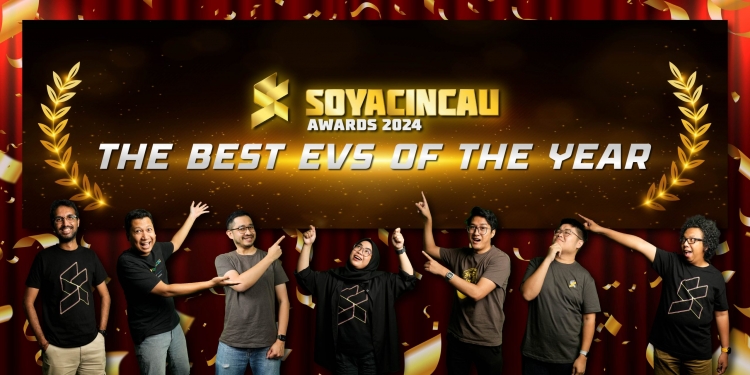While electric vehicles are still quite pricey in Malaysia due to the RM100k floor price policy, the growth of the local EV market continues to rise in 2024. In fact, the total amount of EVs registered with JPJ from January to November 2024 is around 44% more than the whole of 2023.
Throughout the year, we have seen over 30 new EV models make their way into our market which is quite astonishing. To cap off the year, it is now time to honour the best of 2024.
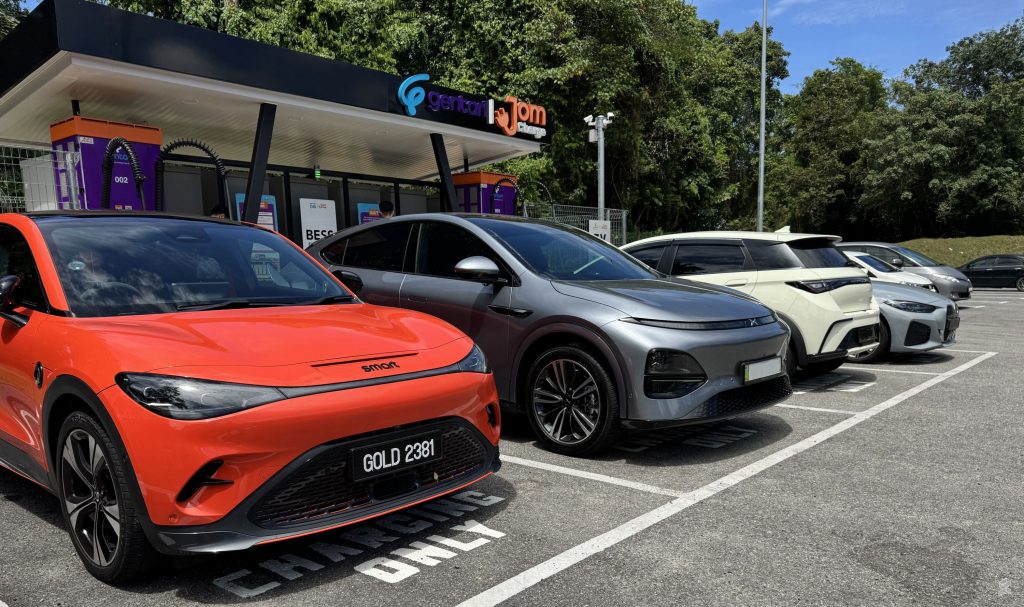
The tech experts at SoyaCincau.com, consisting of Alex, Hanif, Chapree, Putra, Sam, Aisyah, and Duke have curated a list of the best EVs released in 2024 and awarded them Gold, Silver, and Bronze. Unfortunately, we are not able to cover them all though as only models launched between 20 November 2023 and 1 November 2024 were considered due to timing constraints.
Meanwhile, we have also introduced a new award for Charge Point Operator (CPO) to recognise the efforts made by the very people who are responsible for EV charging infrastructure in Malaysia. So, here are our selection for the best of 2024 from the EV arena:
- Value EV of the Year
- Electric SUV of the Year
- Electric Sedan of the Year
- EV of the Year
- CPO of the Year
Read the rest of our Awards
Once you’re done reading this list, check out our other curations for the SoyaCincau Awards 2024!
- The Best Phones of the Year
- The Best Tablets of the Year
- The Best Gadgets of the Year
- The Best Telcos of the Year
- The Best and Worst in Tech of the Year
Value EV of the Year
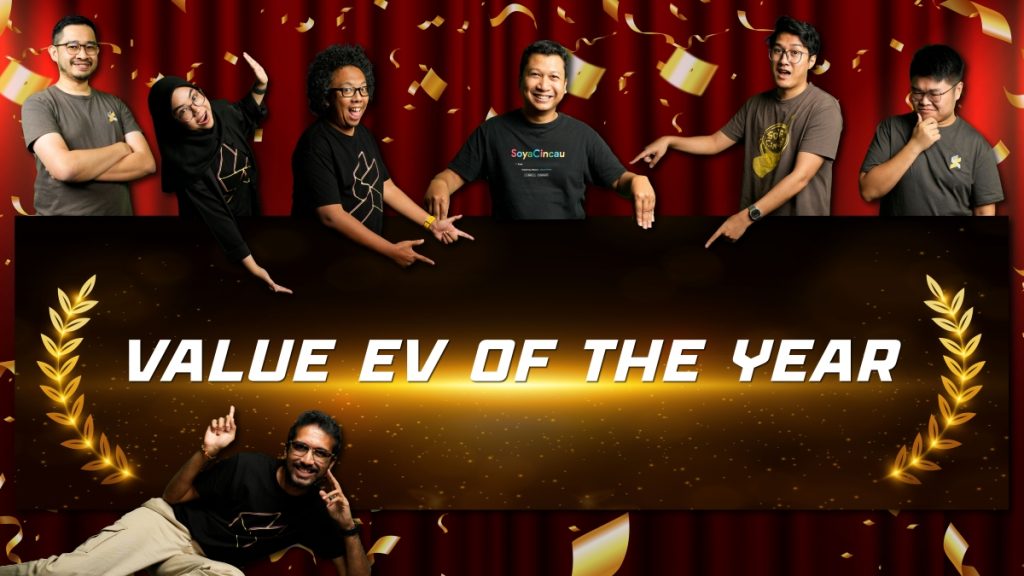
Bronze: MG4 Extended Range
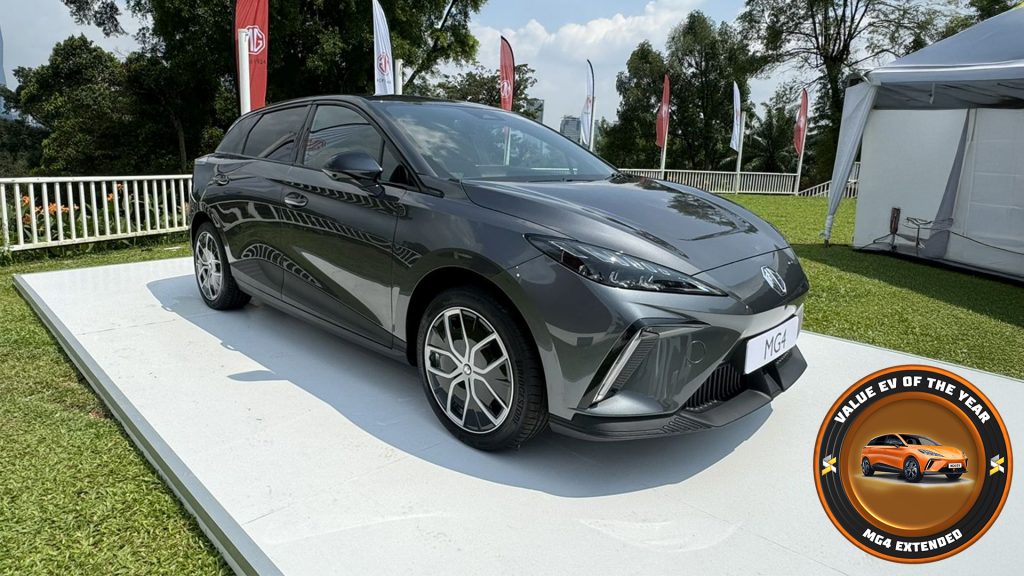
Capable of delivering a WLTP-rated range of up to 520km, there is no other sub-RM150k EV that can deliver as much range as the MG4 Extended Range. Even though range might be the key selling point of this MG4 variant, it can still provide a respectable amount of performance with 0-100km/h timing of 6.1 seconds and a top speed of 180km/h.
This is thanks to its 180kW (241hp) motor with 350Nm of torque and the MG4 Extended Range has a rear-wheel drive setup too. Powered by a 77kWh battery, this EV is also able to support DC charging speed of up to 150kW together with 11kW AC charging capability.
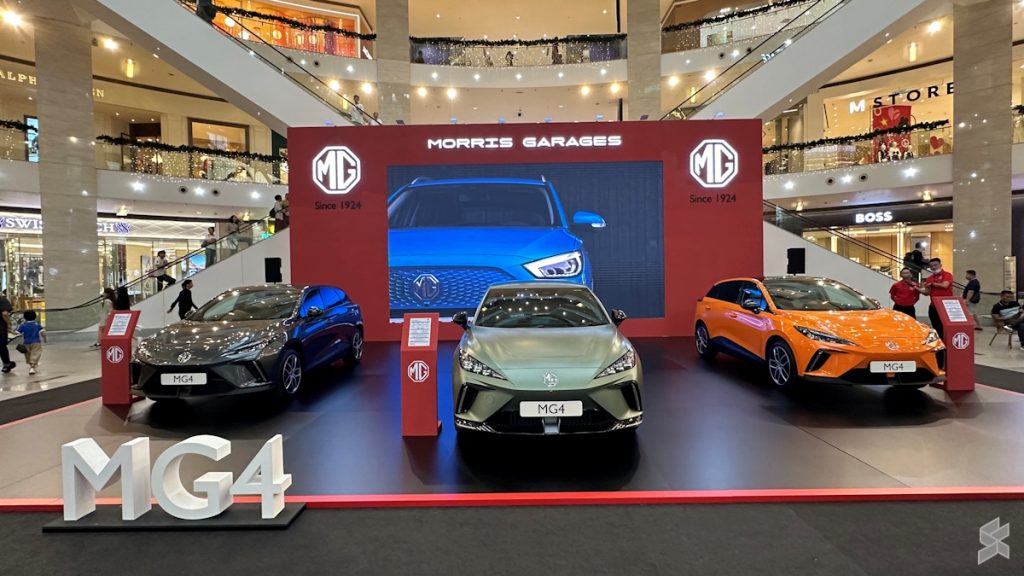
Not only that it have the range and performance, the MG4 also comes with a feisty exterior. All these for less than RM150k – an exceptional value if you are into sporty but practical electric hatchbacks.
Silver: BYD Seal Dynamic
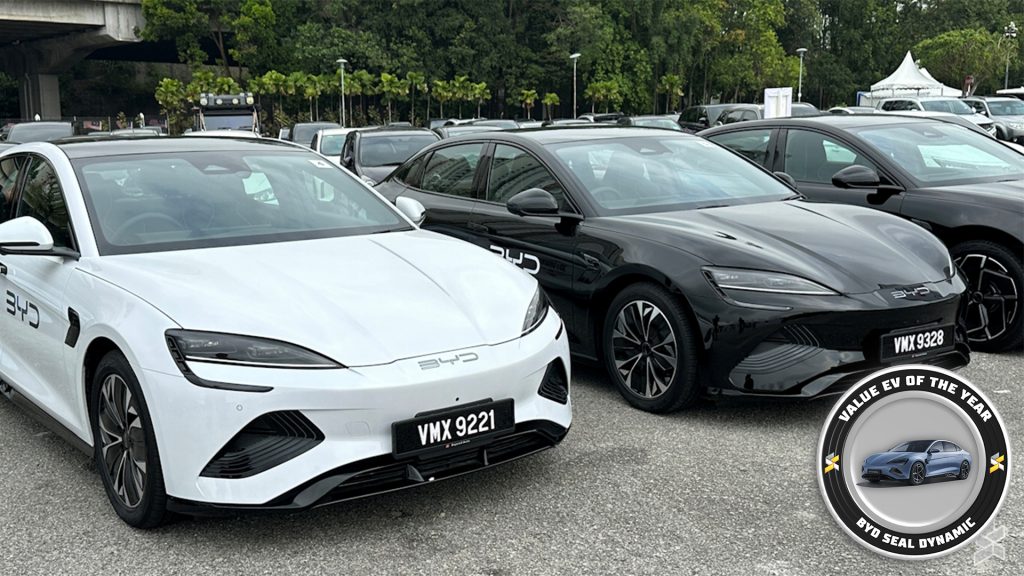
There are only a handful of electric sedans in Malaysia and the BYD Seal Dynamic is the most affordable of the bunch until the arrival of GAC Aion ES ealier this month. That being said, the BYD Seal Dynamic is certainly a much better proposition.
For one, the Seal Dynamic offers a much more sporty exterior design alongside a more comfortable interior as well. It also comes with more tech and safety features including a larger infotainment screen with more capable software, 8 airbags, and full-fledged ADAS with L2 autonomous driving.
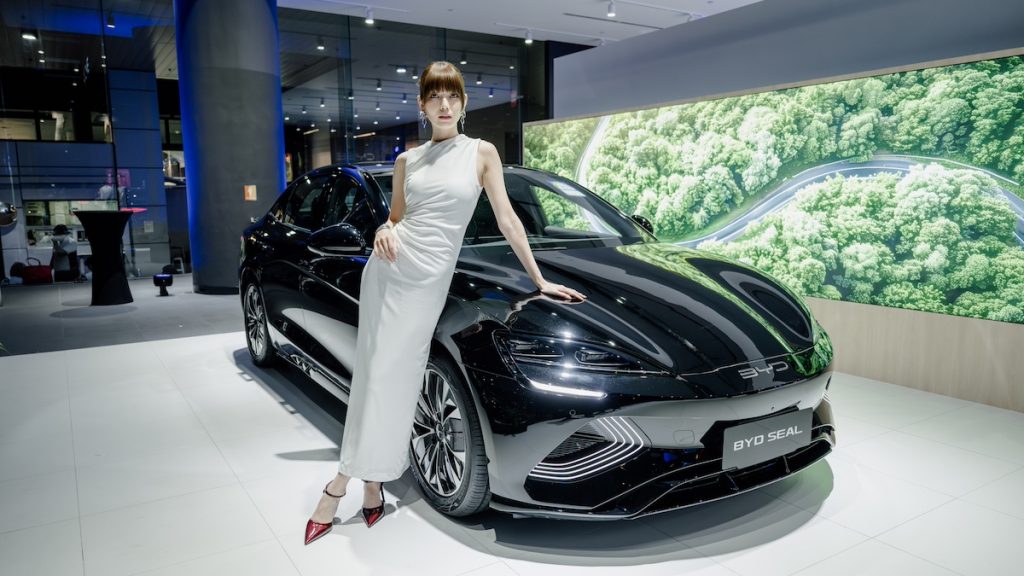
Fitted with a 150kW (201hp) motor that also produces 310Nm of torque, the Seal Dynamic can deliver a WLTP-rated range of 460km. This EV also supports DC charging speed of up to 110kW although it still has the same 7kW AC onboard charger as per Seal Premium and Performance.
At RM165k, the Seal Dynamic certainly costs way more than the Aion ES. However, it is the way to go if you are looking for a proper, more capable, and stylish electric sedan.
Gold: BYD M6
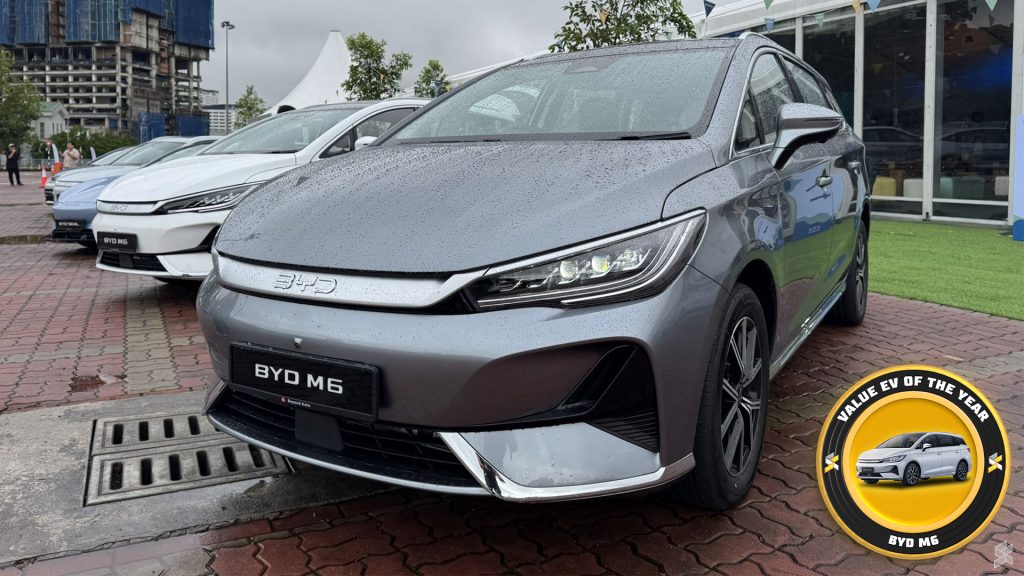
For what it’s worth, the BYD M6 is unbeatable when it comes to value. Sure, it may have a modest exterior and interior as well as an instrument cluster that features analogue meters but don’t let those stop you from checking out the BYD M6.
With a starting price of around RM110k, the M6 is one of the most affordable EVs in Malaysia at the moment. Despite the price tag, it offers plenty of space for cargo and passengers given its nature as a 7-seater MPV.
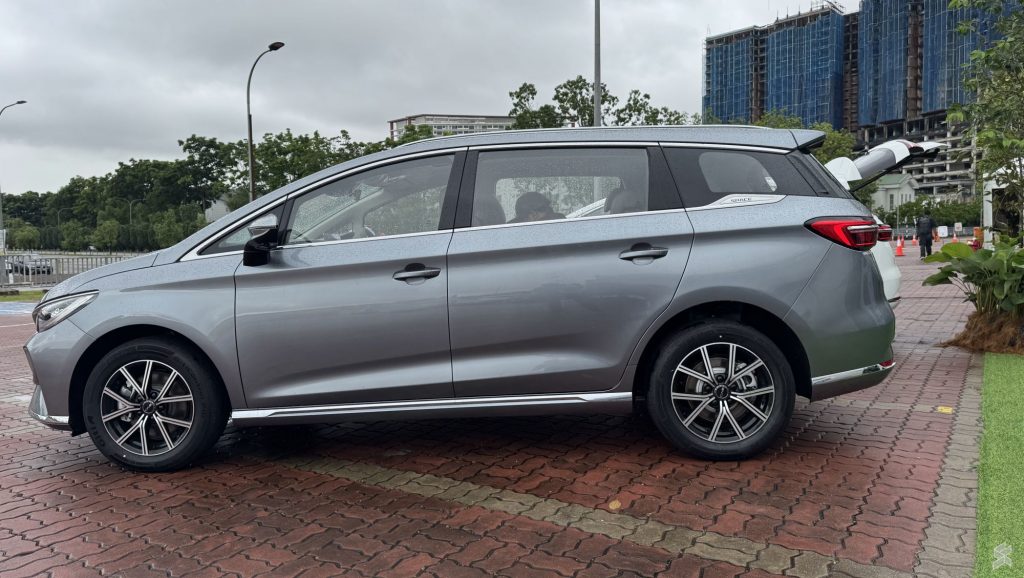
Depending on the variant, you can obtain the M6 with up to 150kW (210hp) electric motor that also produces 310Nm of torque and is powerful enough for most users out there. Capable of supporting DC charging speed of up to 115kW alongside 7kW AC charging, this EV also can deliver up to 450km of WLTP-rated range which is not bad at all.
All in all, the M6 is nicely packaged together to deliver a great combination of space, features, and value.
Electric SUV of the Year
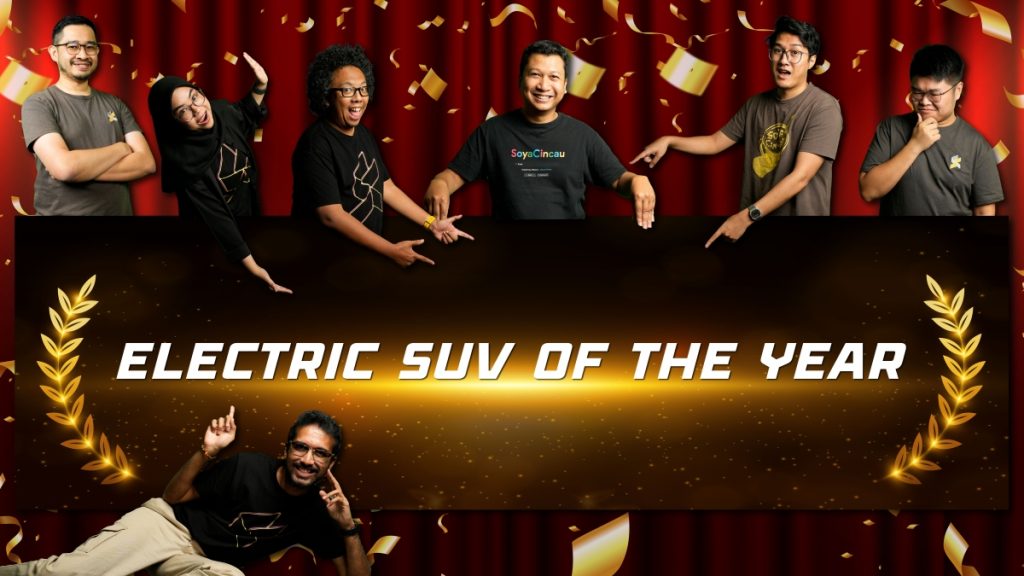
Bronze: Smart #3 Brabus
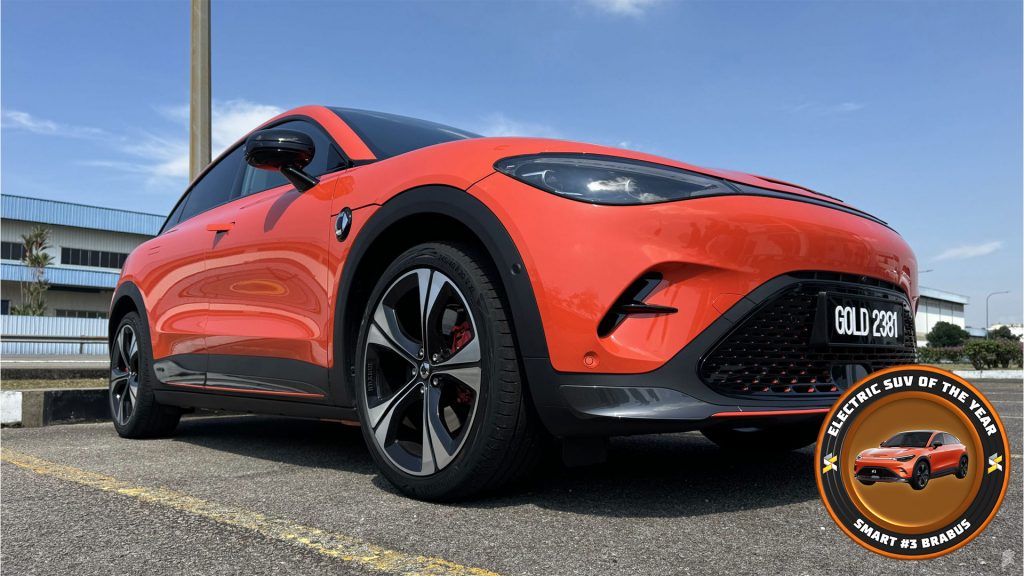
Thanks to its coupe form factor, you may assume that the Smart #3 is much more sportier than the Smart #1. Well, you are not wrong there because that is indeed the case especially for the Brabus variant.
For starters, the Smart #3 Brabus has more exciting driving dynamics than its Smart #1 counterpart. The all-wheel drive EV provides owners with access to 315kW (422hp) of power output alongside 543Nm of torque which the Smart #3 is more than eager to unleash especially through the Rocket Launch mode.
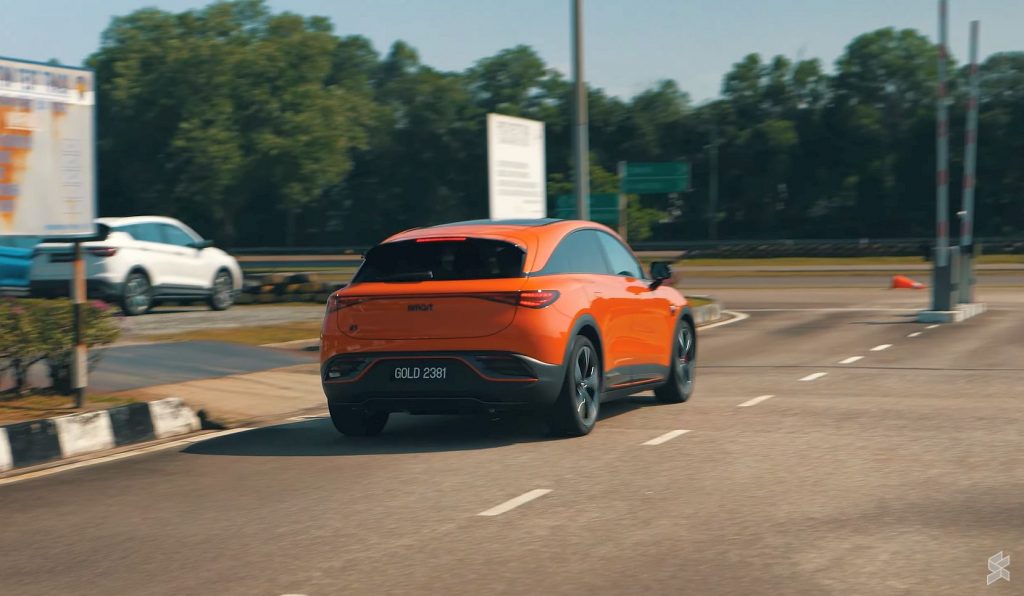
Despite its sporty nature, the Smart #3 Brabus is still a practical electric SUV that can be driven on daily basis. In fact, it has slightly more boot space than Smart #1 at 370L which can be expanded to 1160L while the EV also has a 15L frunk. Available for RM255k, the price tag is okay for what the Smart #3 Brabus has to offer.
Silver: Mini Countryman SE All4
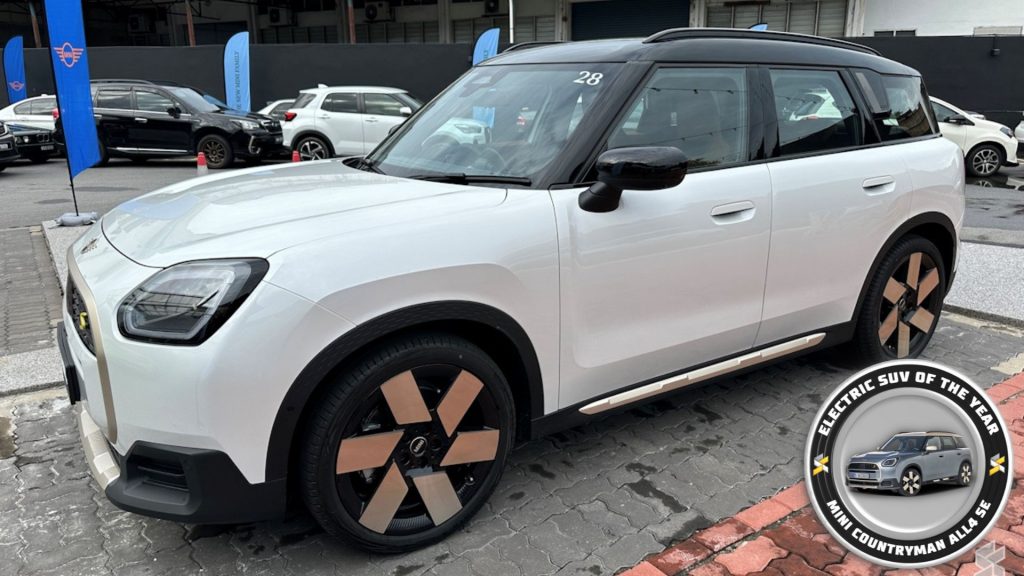
Many may have the assumption that a Mini is a tiny car with a cramped interior. Well, it is likely that they have not yet met the Mini Countryman SE All4.
The Countryman SE All4 is essentially the largest electrified Mini model at the moment. This doesn’t come as a surprise since it was built using the same platform as BMW iX1 and iX2.
In addition to its bold exterior design, the Countryman SE All4 also comes with a rather funky interior which features a knitted textile dashboard and door panels. There is also a massive circular infotainment OLED display and you can switch the vibe of the cockpit immediately through the Mini Experience Modes.
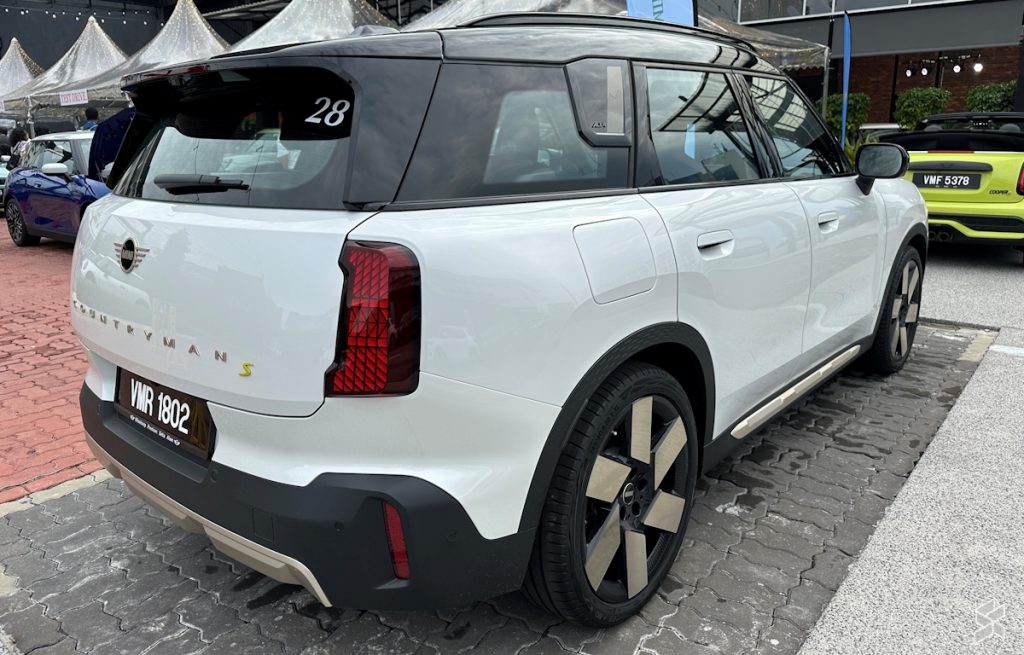
Each of the Experience Modes comes with its own UI design and ambient lighting while some even offer synthetic engine sound. This might seem gimmicky but to us, it injects some additional fun into the Countryman SE All4’s driving experience but don’t worry, you can turn them off if you are tired of them.
The Countryman SE All4 is not lacking in terms of performance too, since it has two electric motors that deliver a combined output of 230kW (308hp) and 494Nm of torque. Powered by a 66.5kWh NCM battery, this EV can go the distance too as it is capable of providing a WLTP-rated range of 432km.
Gold: Hyundai Ioniq 5 N
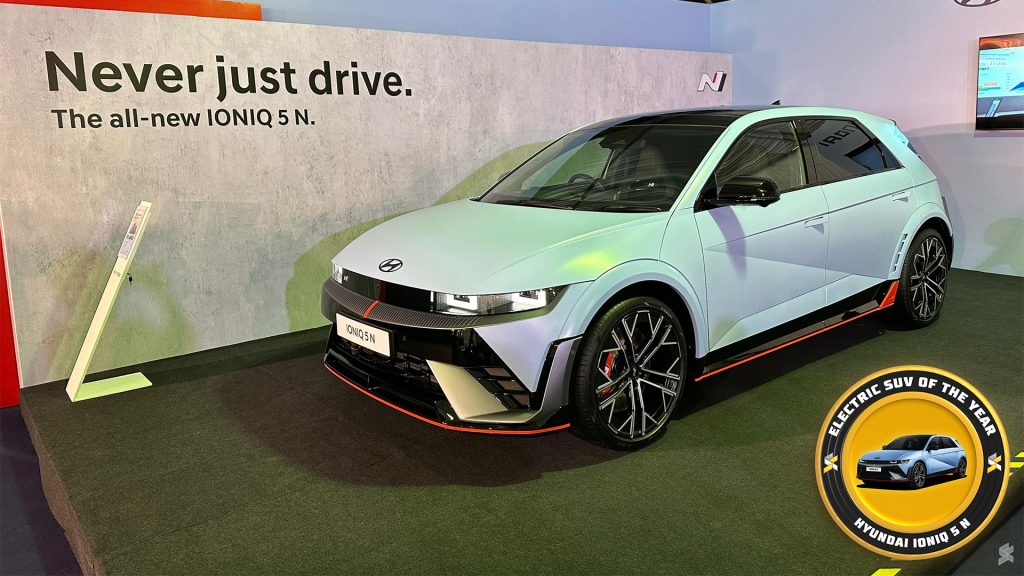
Our bronze and gold medalists for the electric SUV of the year category already have quite some character to offer. Still, they are nowhere as bonkers as the champion, the Hyundai Ioniq 5 N.
For many, EVs are not exciting enough for their taste buds but the Ioniq 5 N can shatter that stereotype. This EV screams not just character, but also excitement inside and out.
Being an SUV, it certainly has the practicality side of things covered but at the same time, it’s dressed like a hot hatch a teenager would dream of owning.
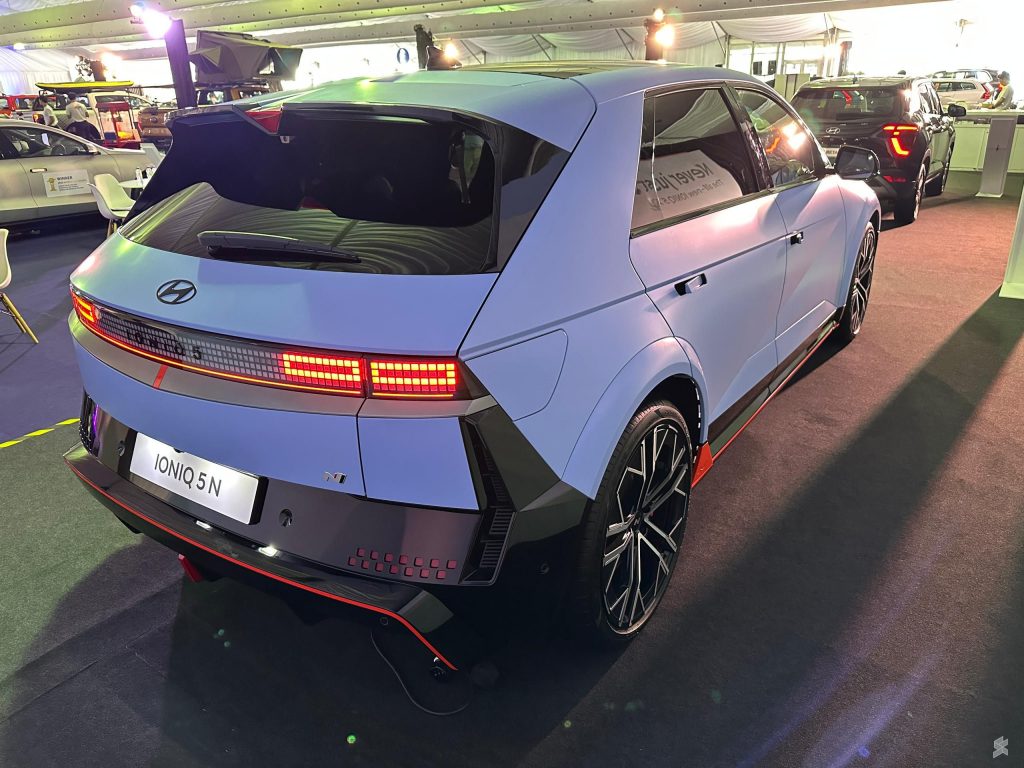
The 609hp and 740Nm of torque it delivers through a dual motor AWD setup certainly lives up to its aggressive looks too. But what earned the Ioniq 5 N its top spot is the enhanced driving experience.
Not only it can simulate the sound of a 2.0-litre turbo engine sound like a gasoline-powered hot hatch, it can also replicate pops and bangs, as well as shifting jolts and clutch kicks as if it has an 8-speed dual-clutch transmission (DCT). This is most probably the wildest EV you can find out there.
Electric Sedan of the Year
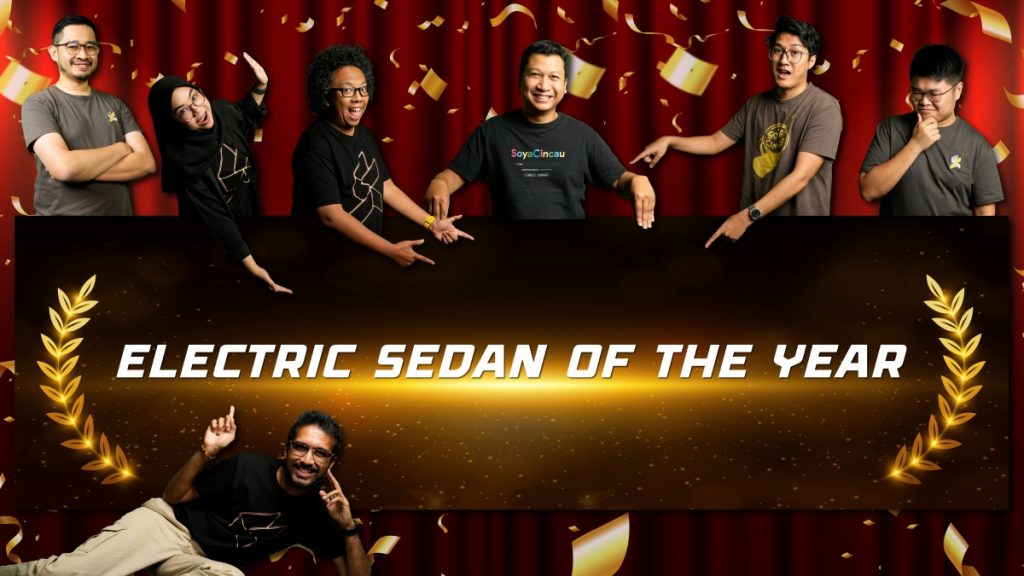
Bronze: BYD Seal Performance
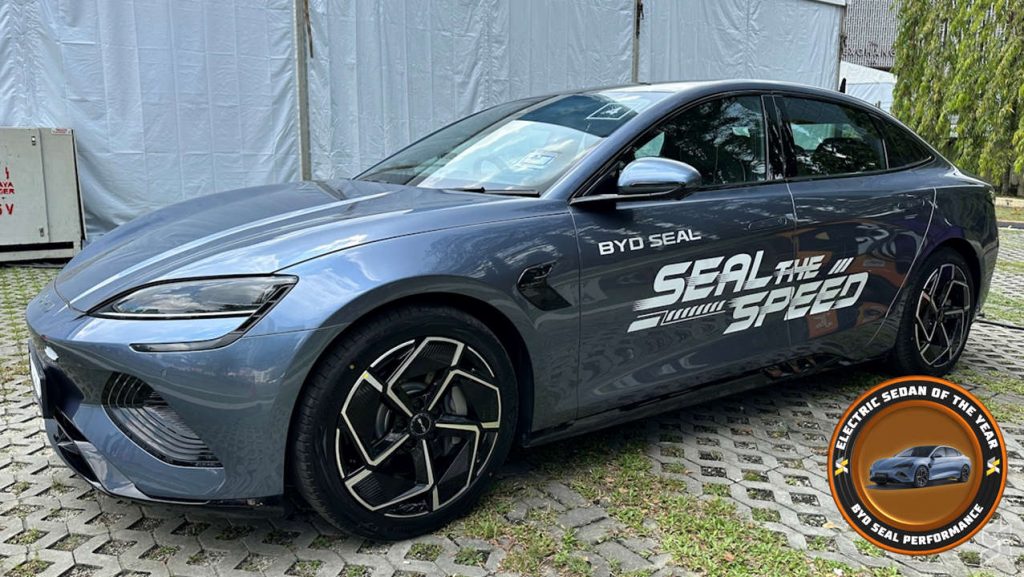
A 0 to 100 km/h timing of under 4 seconds is something that usually associated with supercar. Interestingly enough, you can get that too with BYD Seal Performance for barely RM200k.
For what it’s worth, raw firepower are not the only thing that Seal Performance has to offer. It also capable of delivering over 500km of range and that is according to the WLTP standard, not the more forgiving NEDC or CLTC standards.
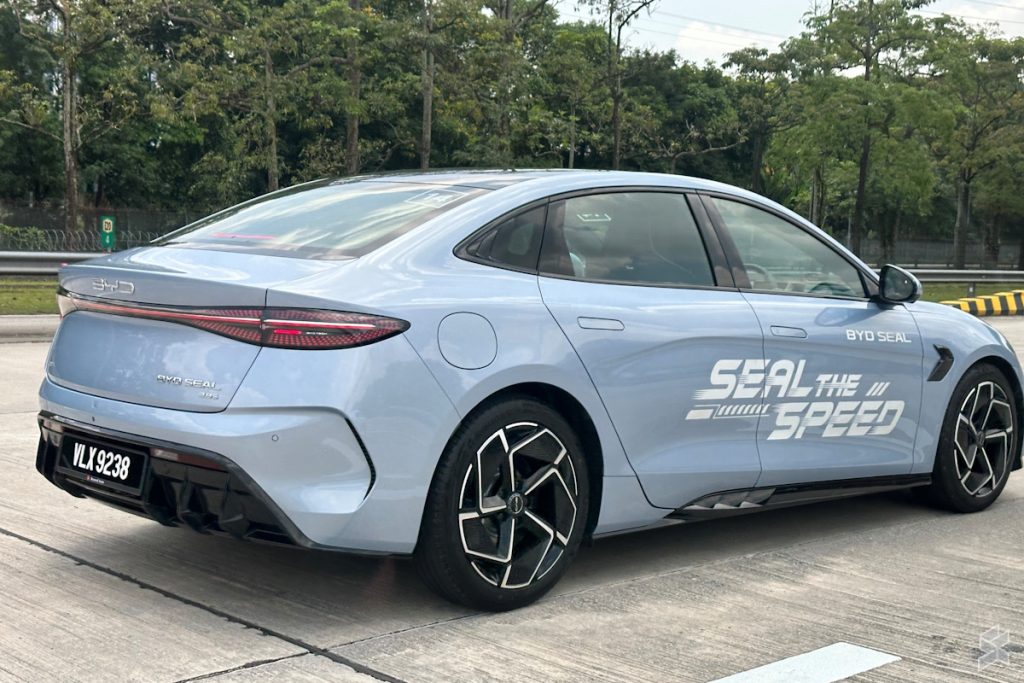
Sure, the Seal Performance’s 0-100km/h timing might be 0.7 seconds slower than a Tesla Model 3 Performance and its driving dynamics are not as refined as its American rival. There is also the slower DC charging speed of 150kW together with a 7kW AC onboard charger.
That being said, there is also a price difference of RM40k between them. In addition to that, some may prefer BYD’s take on interior design over Tesla’s minimalist approach.
Silver: Tesla Model 3 Performance
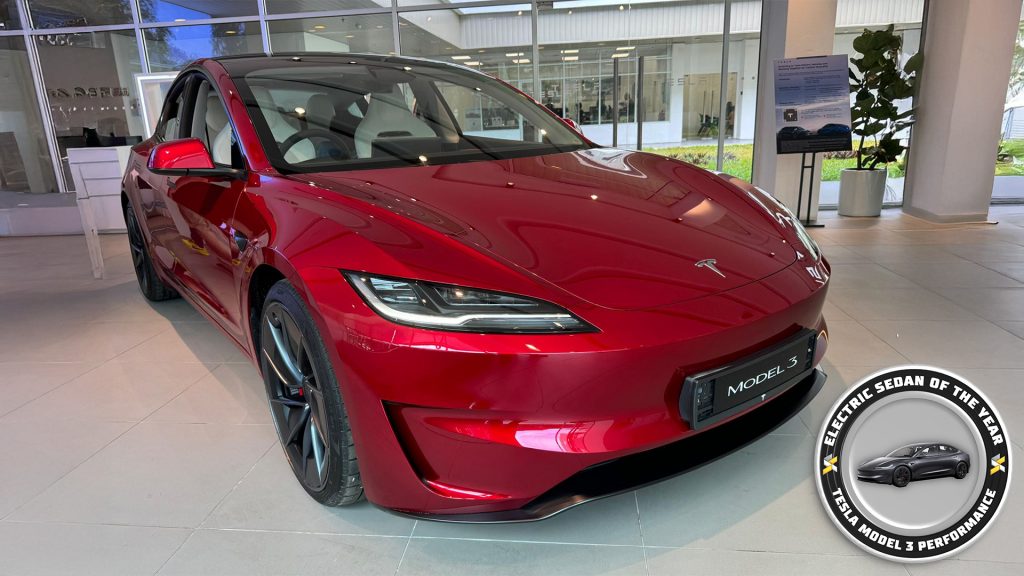
Tesla EVs are said to be boring but “boring” is not something that we would use to describe the Tesla Model 3 Performance (M3P). Instead, the word “fun” comes to our mind.
Unlike the non-Performance Tesla EVs, the M3P comes with plenty of “goodies”. Among them includes the adaptive suspension, Track Mode, customisable car settings, lightweight forged performance wheels, and high-performance brakes.
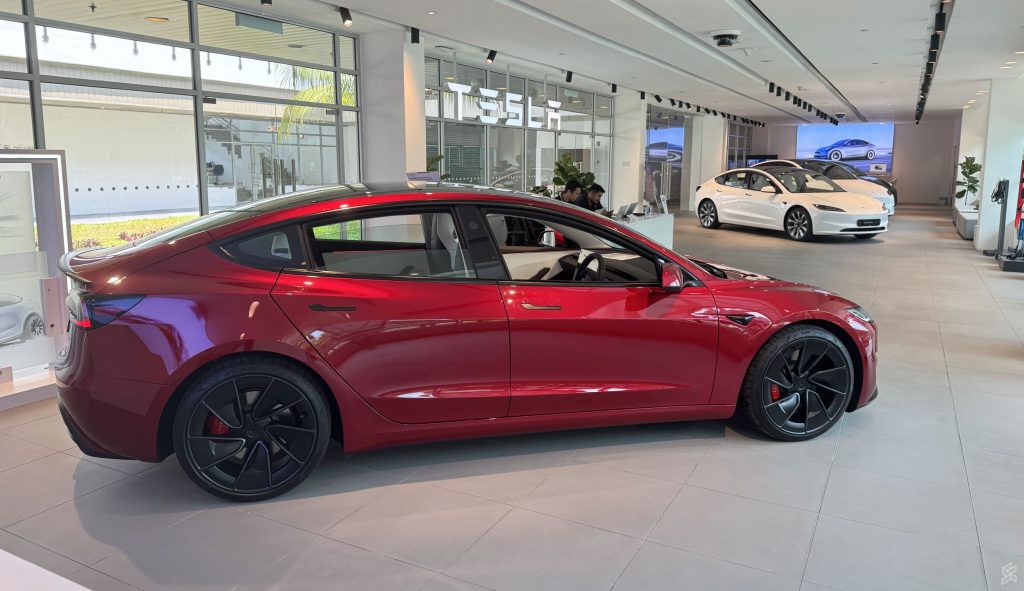
Not to forget, there are also some carbon fibre décor all over the car to match its status as a “performance” EV. Despite all these extras, the M3P is not a hardcore performance vehicle as you can choose to tone things down and make it as a comfortable daily driver with up to 528km of WLTP-rated range.
According to SoyaCincau’s Co-Founder (and our team race driver), Amin Ashaari who has drove this EV to its limit at Sepang International Circuit, the M3P is not a performance car in the purest sense of the word. However, it is still a fast car with plenty of range to offer for just under RM250k and it is really hard to beat that proposition.
Gold: BMW i5 M60
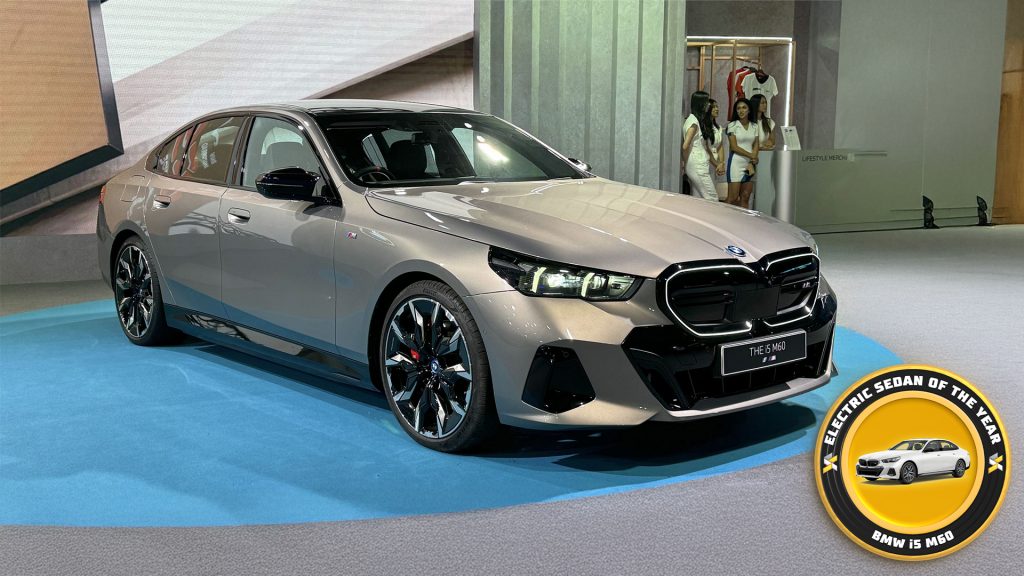
If there’s one company that knows a thing or two about sedans, it’s the one that has been making sedans for over 88 years. BMW did not make drastic changes to the established formula with the all-electric BMW i5 M60. What we like most about this car is that it doesn’t feel like an alien spaceship. It still maintains the familiarity of the company’s design language on the outside and a recognisable interior layout.
When you step into the BMW i5 M60, it feels premium, not only in terms of material selection but also the aesthetics and ambience. Special is the best word we can use to describe the interior, especially when compared with the monotonous, clinical interior of the Mercedes-Benz EQE.
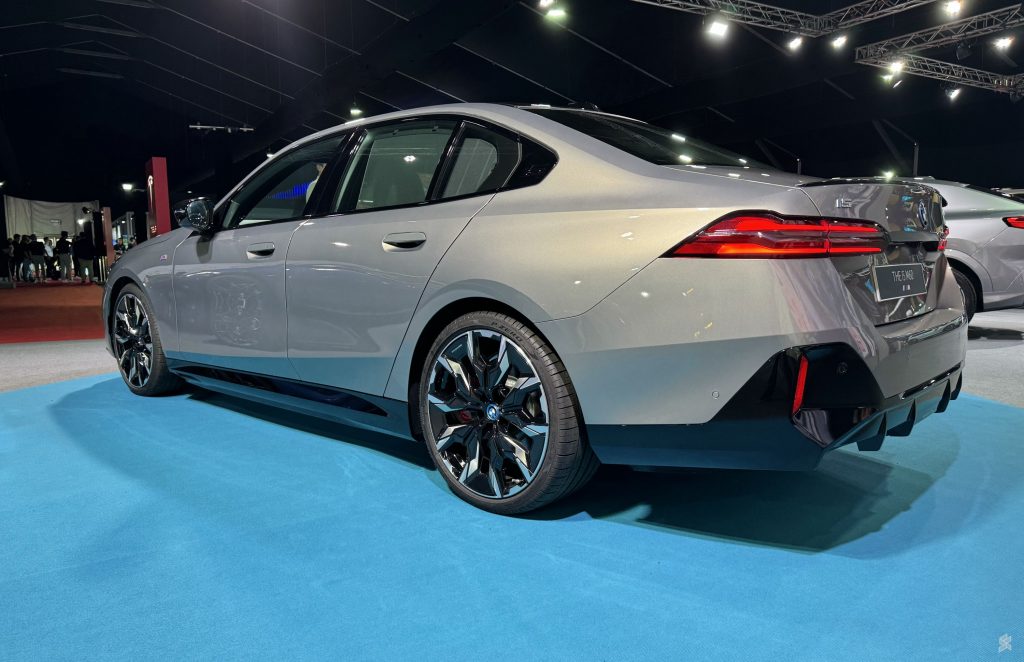
Floor the pedal in this M60 variant, and get your behind kicked by 592hp and a face-warping 820Nm of torque. Keep your foot down and the BMW i5 M60 will hit 100km/h in 3.8 seconds.
So, when you combine a familiar sedan body shape, an interior that makes you feel special, and rapid performance, you get a car that belongs at the top of the podium.
EV of the Year
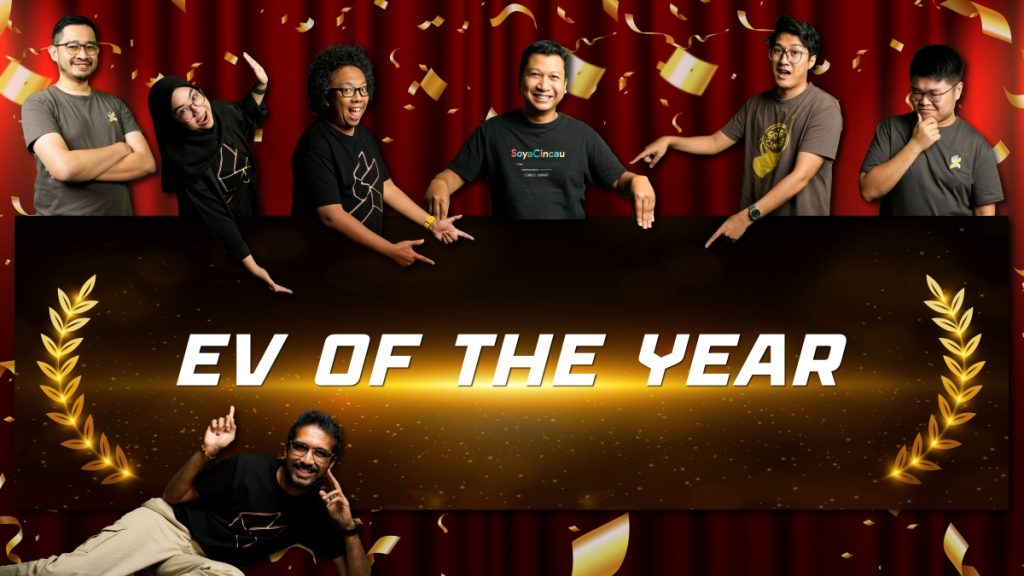
Bronze: BYD M6
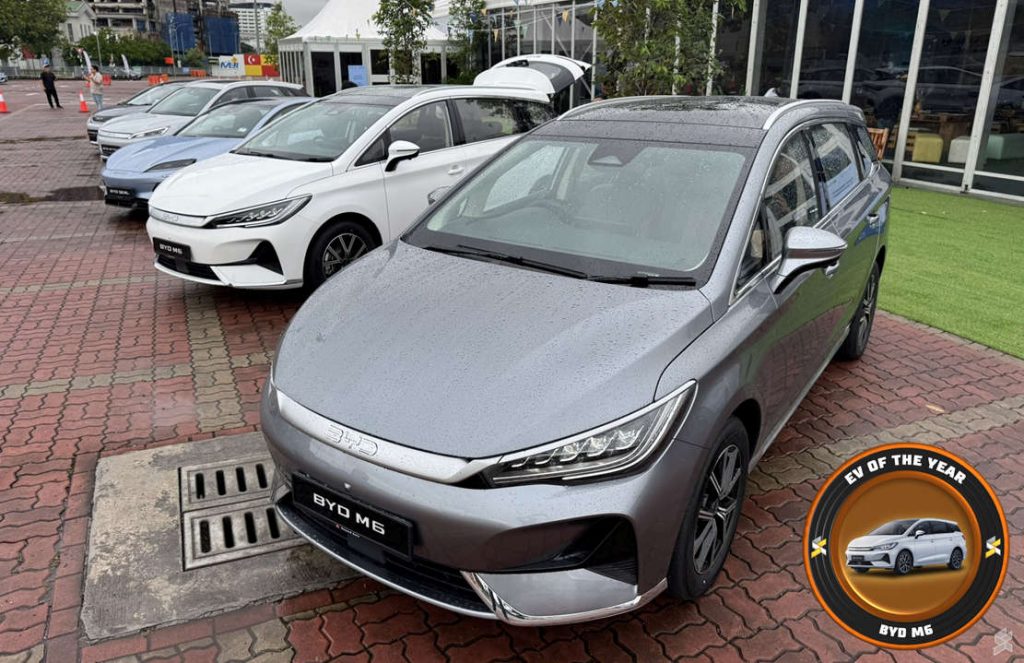
While we talked about M3P’s value proposition earlier, the true bang-for-bucks EV in our market at the moment is the BYD M6. This electric MPV might be a little bit utilitarian to some, but for many, it generally provides everything they need in one nicely packaged offering.
Frankly speaking, there is no other EV in Malaysia at the moment that offers plenty of space for up to 7 people, a full-fledged ADAS suite with L2 autonomous driving, and up to 450km of range for less than RM125k. All in all, the BYD M6 is the current king of value as far as EVs are concerned, which might explain why it was the most popular EV in Malaysia last month.
Silver: Tesla Model 3 Performance
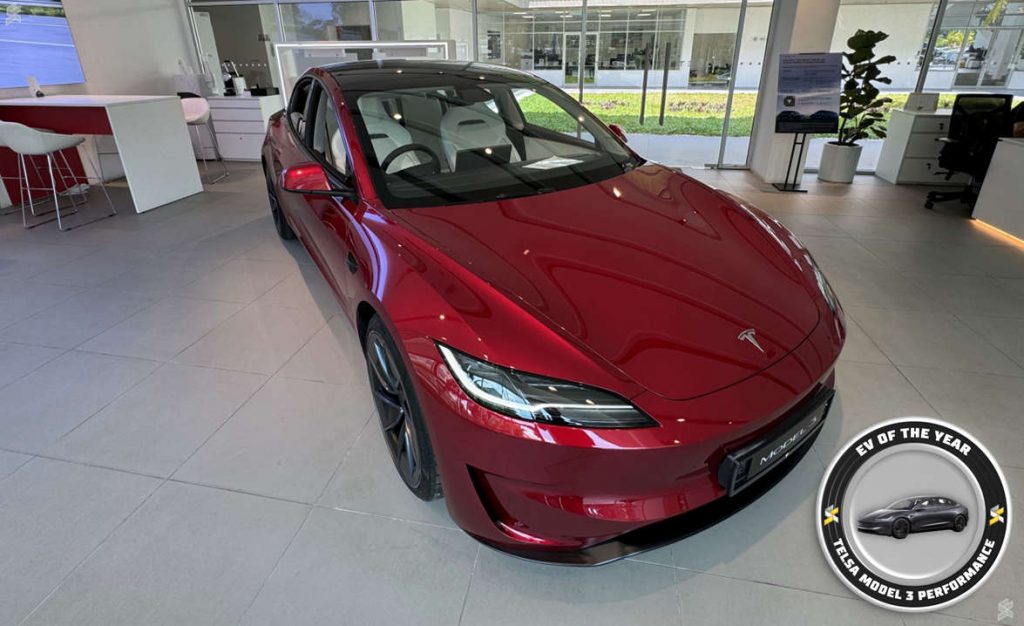
One of the biggest reason why Tesla Model 3 Performance (M3P) is one of our shortlisted choice for EV of the Year award is its value proposition. For under RM250k, the Tesla Model 3 Performance (M3P) offers supercar-like performance that can still be a comfortable daily car with a massive range to boot.
The amount of raw power and track-oriented features within M3P allow you to have fun from time to time. For your normal commute, you can take things down the notch and the M3P will just follow along. In other words, the M3P is not a one-trick pony.
Gold: Hyundai Ioniq 5N
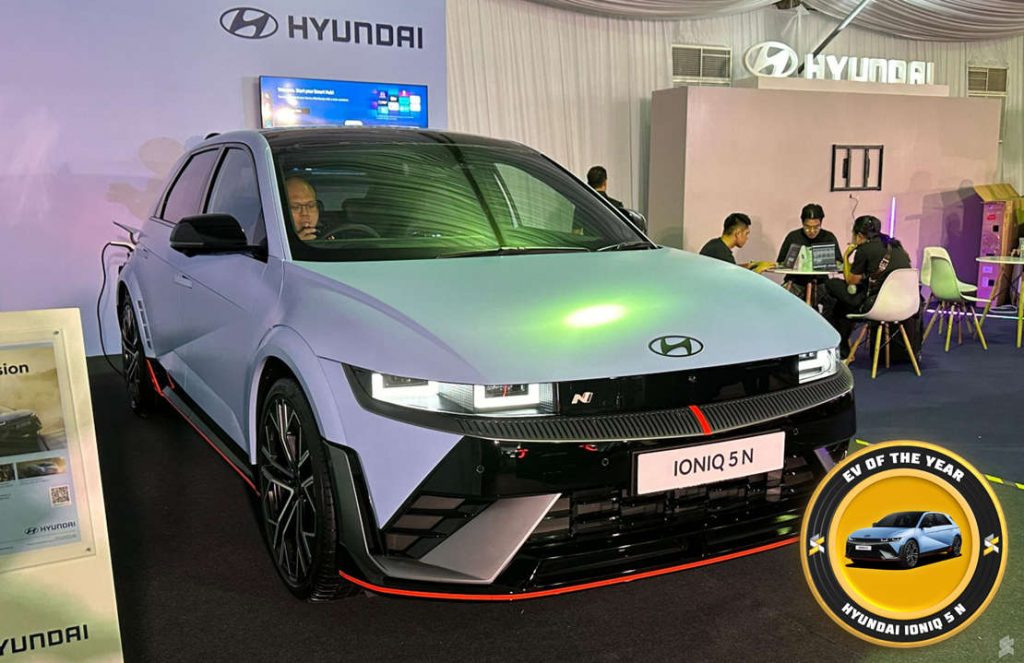
The Hyundai Ioniq 5 N singlehandedly won three categories here at the SoyaCincau Awards 2024. This includes not just the Best Electric SUV of the Year and the Gadget of the Year, but also the overall Best EV of the Year.
The reason why that is comes down to one keyword – character. It’s not a secret that many EVs can go fast but the Ioniq 5N has something extra: enhanced driving experience that closely matched a high-performance ICE car.
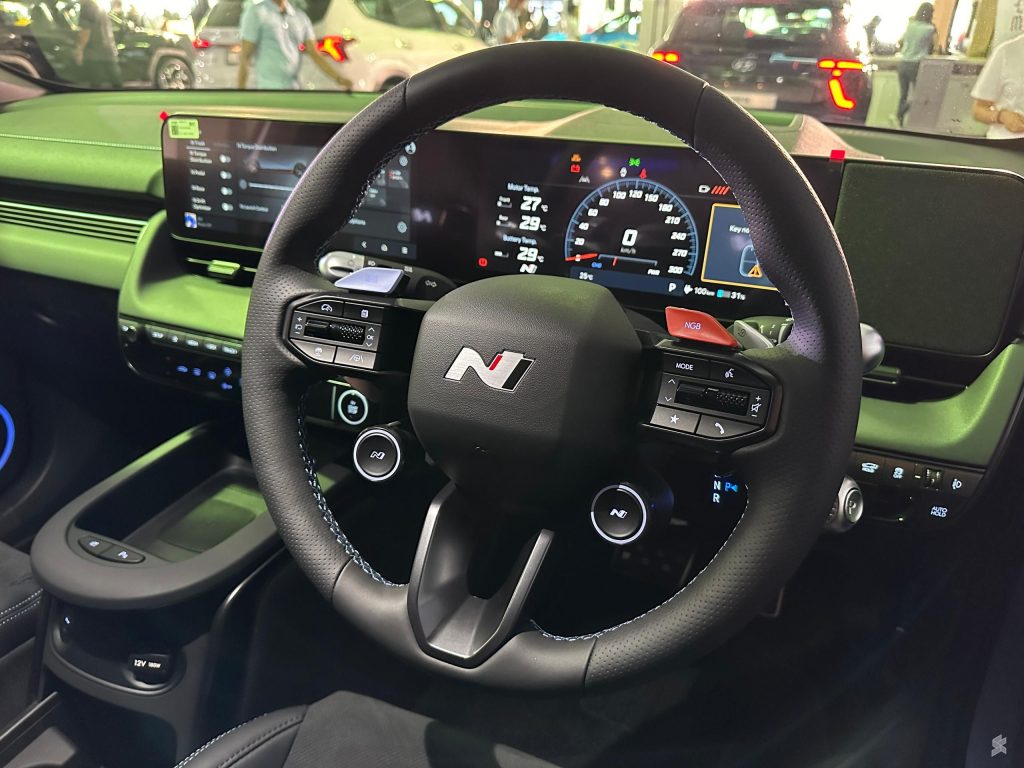
Some may feel features such as N e-Shift and N Active Sound+ rather gimmicky but from what we have seen so far, the implementation was done quite well. Combined with the amount of performance that it has alongside other enhancements such as reinforced chassis, additional aero parts, upgraded brake system, and N Grin Boost mode made the N version of the Ioniq 5 a feisty EV.
With the Ioniq 5 N, Hyundai essentially shows everyone that EV can be fun if manufacturers willing to spend a little bit more time. This is officially the craziest EV we’ve seen in Malaysia this year and we are all here for it.
CPO of the Year

Bronze: TNB Electron
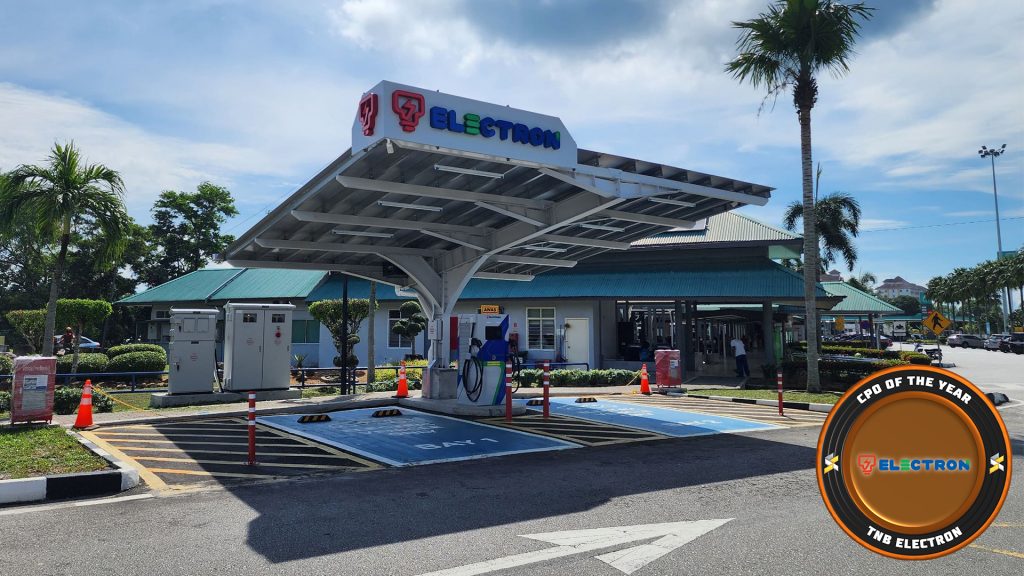
While we recently criticised TNB Electron’s ambitious plan for 2025 and extremely slow deployment rate, you have to give the credit when it is due.
For the past few months, TNB Electron has been deploying DC chargers at several underserved areas in Perak and Kelantan through its partnership with Aeon Mall and Petron. The CPO is also already looking to do the same in Pahang and Terengganu although we have to wait until next year to see if TNB Electron able to make their plan stick.
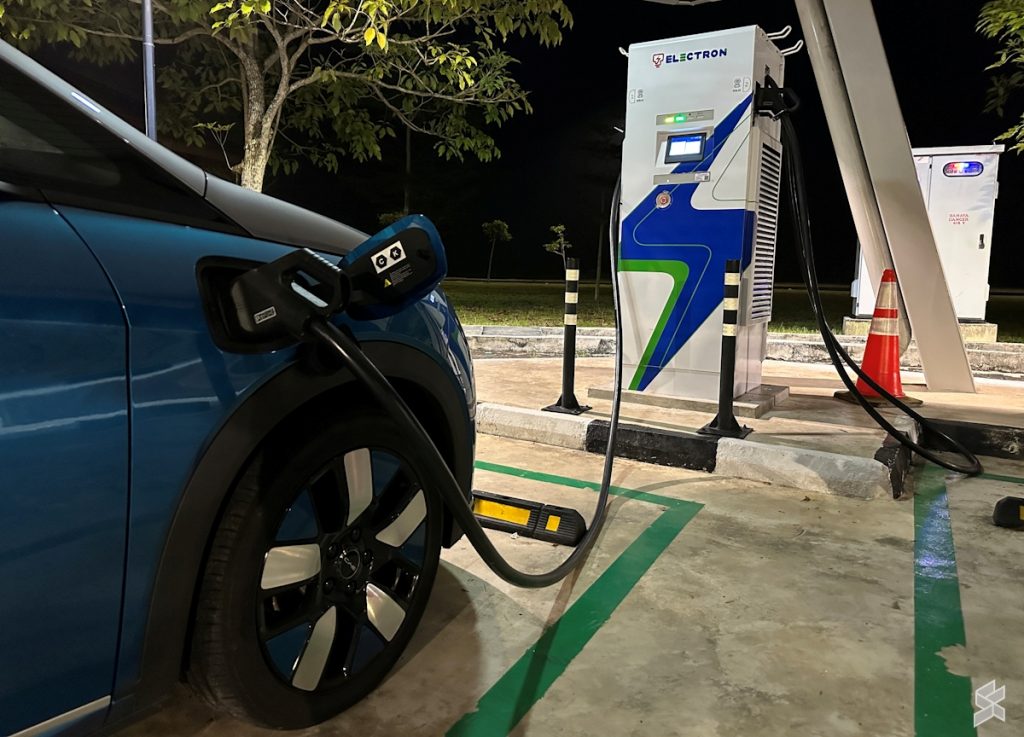
TNB Electron has also added BHPetrol to its list of partners with the opening of 200kW DC charger in Jalan Genting Klang, Setapak. Meanwhile, the CPO has also implemented off-peak charging fee at selected R&R locations.
Considering what TNB Electron has done so far, it is clear the CPO business is not just a side hustle or R&D project for TNB. That being said, we do want TNB to ramp up its effort on EV charging infrastructure in 2025.
Silver: DC Handal
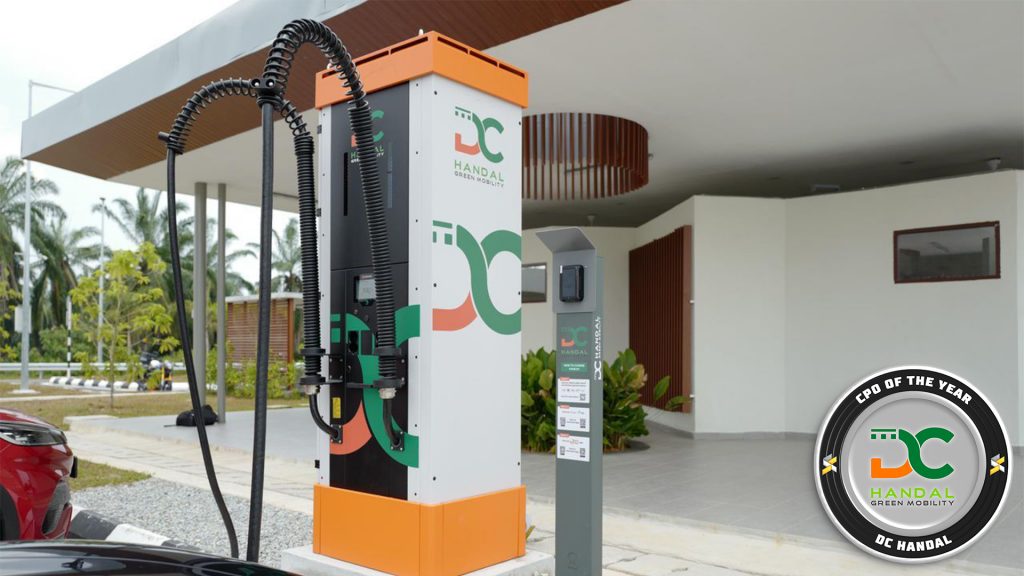
The only DC-oriented CPO in the country and the pioneer of debit/credit card-based payment for EV charging, it is all about scale for DC Handal.
As an example, the CPO demonstrate how EV chargers can be set up much faster than a traditional petrol station by deploying three high-speed EV changer hubs at the West Coast Expressway (WCE). DC Handal has also upgraded its hub in Johor Premium Hub which now has a total of 12 high-speed charging bays.
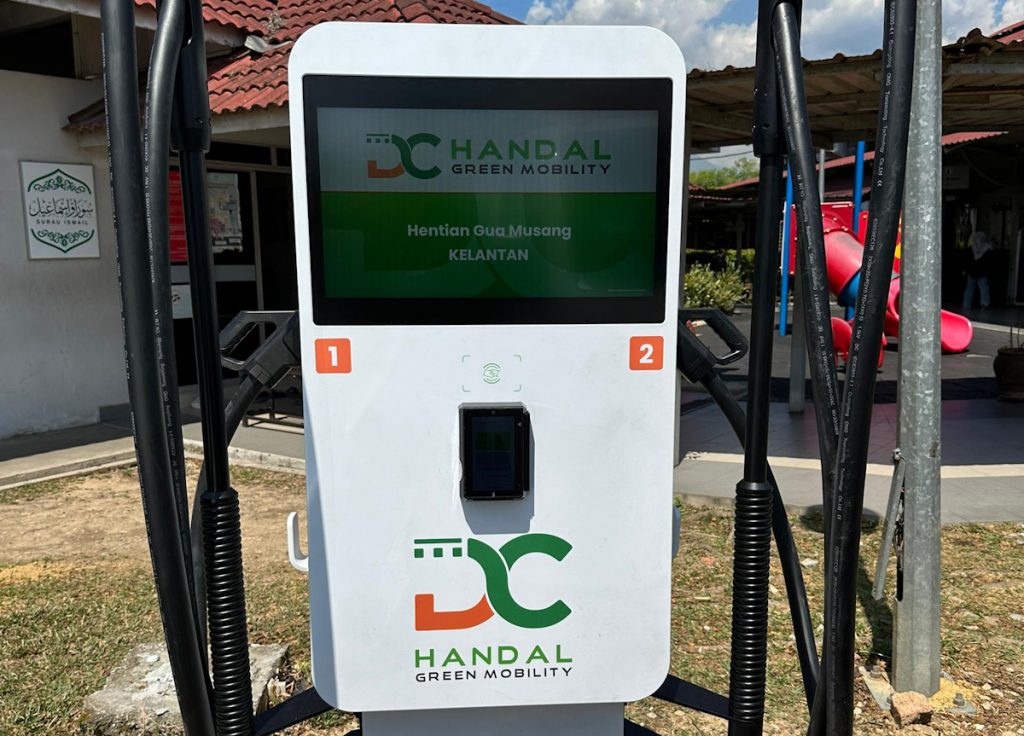
As if it is not enough, the CPO is now in the midst of deploying 28 DC changing points at its upcoming hub at Mall of Medini in Iskandar Puteri, Johor. However, there was one major move earlier this year that really helped seal its place in our inaugural CPO of The Year winner’s list: the deployment of DC charger in Gua Musang, Kelantan.
While it was just a low-powered 47kW DC charger, it was deemed as a landmark move due to the importance and popularity of Gua Musang within the KL – Kota Bharu route. All of sudden, the route now seems viable for owners of EVs with sub-400km of range.
Gold: Gentari
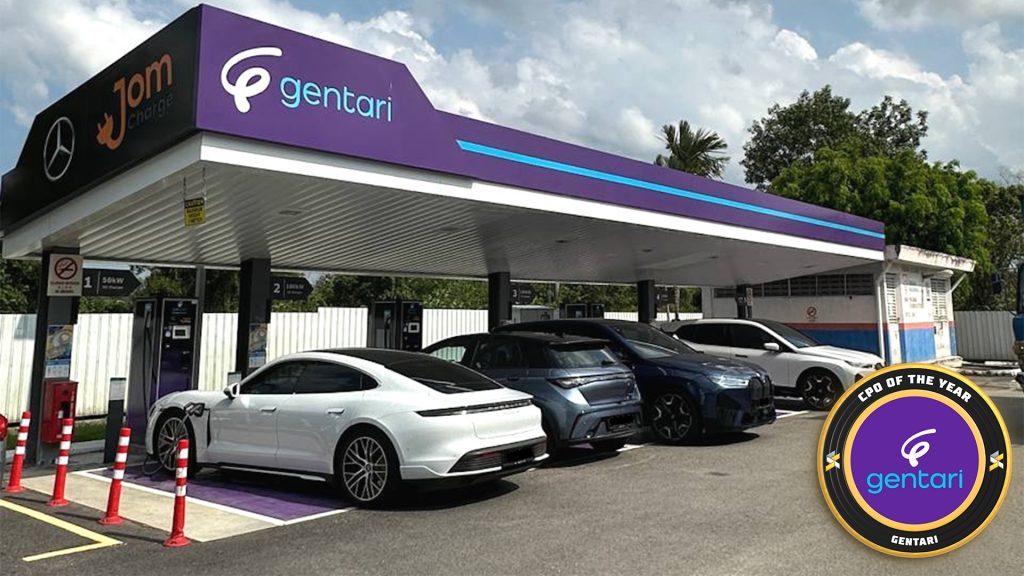
Since it was launched in June 2022, Gentari has quickly established itself as one of the largest CPO in Malaysia. Fast forward to 2024, the Petronas green energy and mobility subsidiary continues to expand its charging infrastructure throughout the country.
Among them is the first-ever NGV pump to EV charger conversion in Malaysia which took place in Kerteh and Sepang. Aside from continuous expansion of EV charging infrastructure, Gentari has also introduced the Gentari Go Power Pass subscription plan that provides huge savings to frequent users.
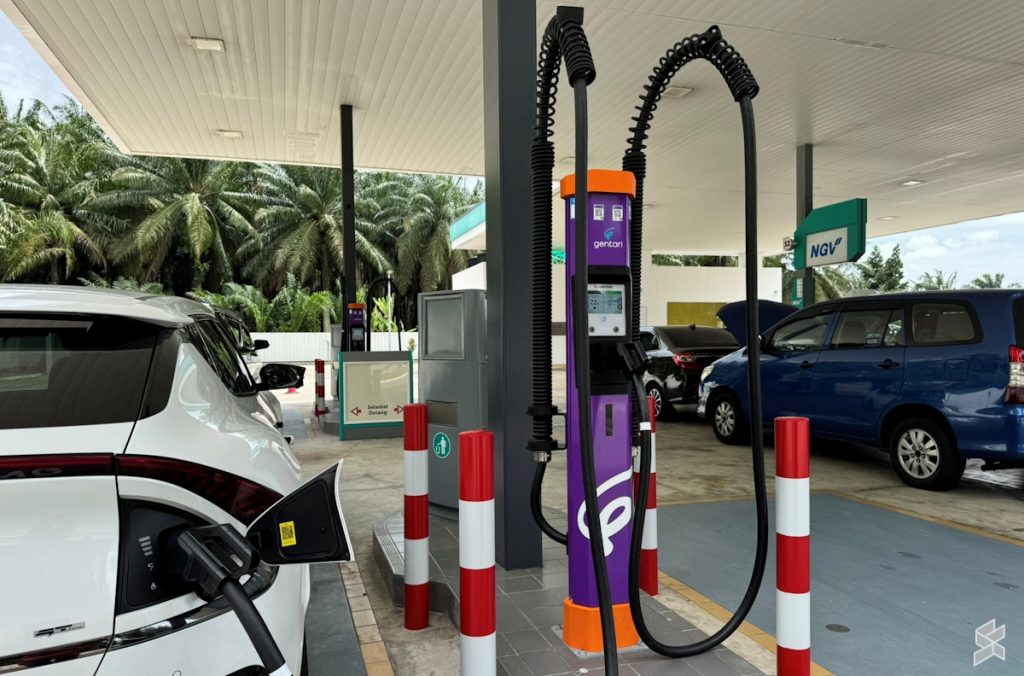
Gentari also showed its commitment to customer’s feedback. To improve the experience of its EV chargers with solar and battery energy storage system (BESS), Gentari addressed the request by implementing live battery status for its BESS-assisted chargers inside the Gentari Go app. This allows EV owners to plan their travels more efficiently since they now no longer need to guess whether the BESS location has enough battery to charge their EV or otherwise.
Conclusion
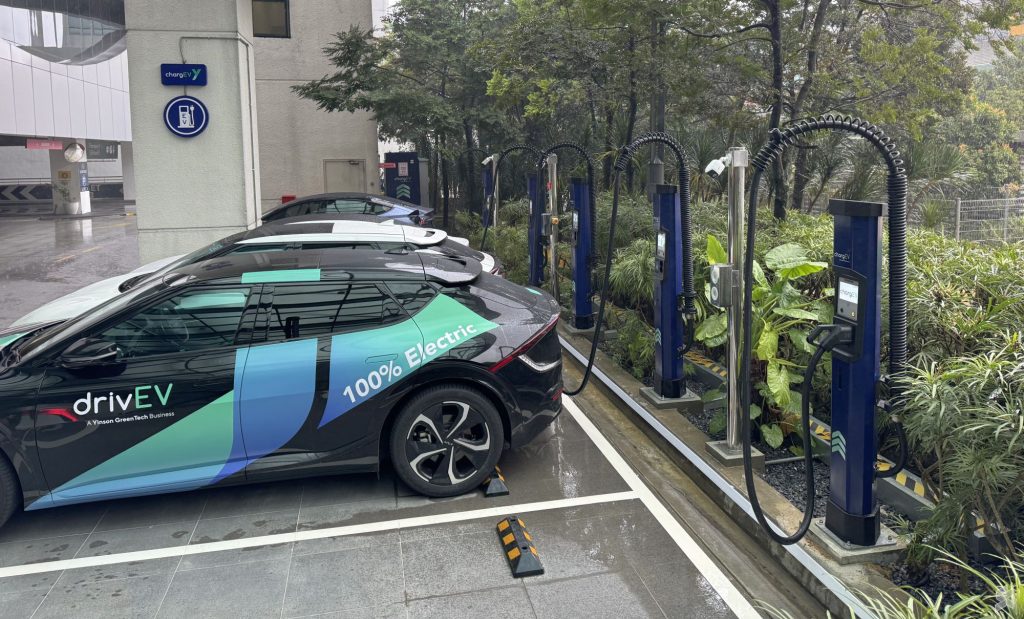
2024 has been a great year as more people are warming up to EV. There were plenty of new models introduced in Malaysia throughout the year and we also have quite a vibrant CPO market.
We expect that things will get even more interesting in 2025 as we believe the EV adoption rate will increase further next year. We have seen promising uptake of Proton’s first-ever EV, the e.MAS 7 while Perodua is also set to join the foray with an affordable EV that is expected to cost under RM90k.
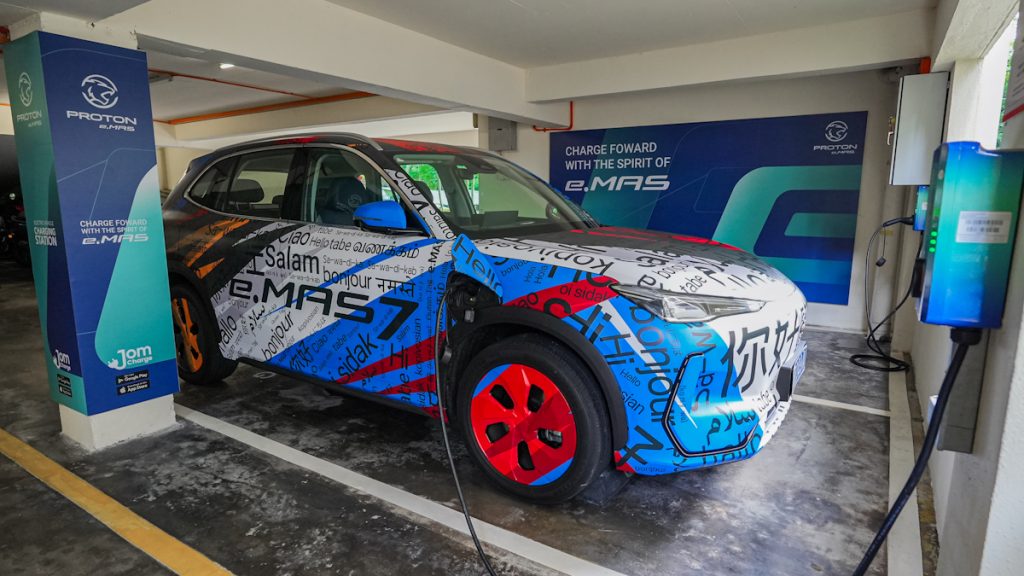
On the other side of the spectrum, Malaysia’s EV charging infrastructure is still trailing behind the 10,000 charging point target that the government want to achieve by the end of 2025. Consider this: there were only 3,354 charging points across Malaysia, as of October.
In order to hit that 10,000 target, CPOs have to deploy 6,646 charging points over a period of 14 months which equals to 110 charging points per week! We not sure whether it is doable but all in all, it is indication that related authorities need to come out with drastic measures to accelerate the rollout of EV charging infrastructure in Malaysia.

